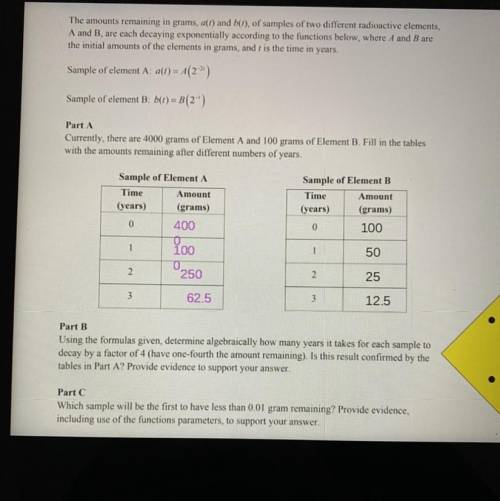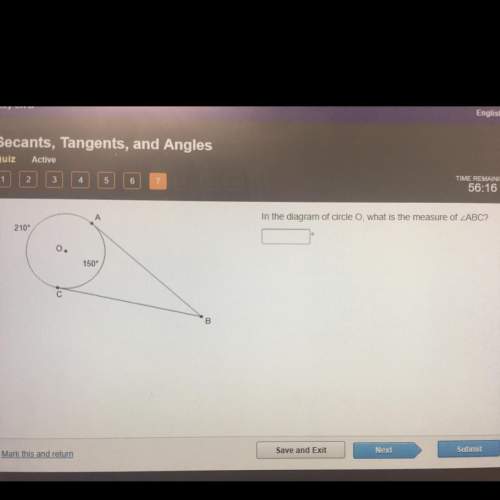
Mathematics, 26.02.2021 08:00 hdjsjshshsh
The amounts remaining in grams, atr) and kn), of samples of two ditferent radioactive elements,
A and B are each decaying exponentially according to the functions below, where A and B are
the initial amounts of the elements in grams, and r is the time in years.
Sample of element A: atr) = 4(2-)
Sample of elernent B. 641)= B(2)
Part A
Currently, there are 4000 grams of Element A and 100 grams of Element B Fill in the tables
with the amounts remaining alter different numbers of years.
Sample of Element A
Time Amount
(years) (grams)
0 400
Sample of Element B
Time Amount
(years) (grams)
0
100
1
100
1
50
2
0
250
2
25
3
62.5
3
12.5
Part B
Using the formulas given, determine algebraically how many years it takes for each sample to
decay by a factor of 4 chave one-fourth the amount remaining). Is this result confirmed by the
tables in Part A? Provide evidence to support your answer.
Part
Which sample will be the first to have less than 0.01 gram remaining? Provide evidence
including use of the functions parameters, to support your answer.


Answers: 2


Another question on Mathematics

Mathematics, 21.06.2019 20:30
Angles r and s are complementary. the measure of angle r is 31 degrees. which equation can be used to find angle s?
Answers: 1



Mathematics, 21.06.2019 22:40
What rotation was applied to triangle def to create d’e’f’?
Answers: 2
You know the right answer?
The amounts remaining in grams, atr) and kn), of samples of two ditferent radioactive elements,
A a...
Questions


Chemistry, 28.01.2020 13:28



Mathematics, 28.01.2020 13:28


History, 28.01.2020 13:28


Social Studies, 28.01.2020 13:28

Mathematics, 28.01.2020 13:28




Mathematics, 28.01.2020 13:28


Health, 28.01.2020 13:28


Biology, 28.01.2020 13:29

Mathematics, 28.01.2020 13:29




